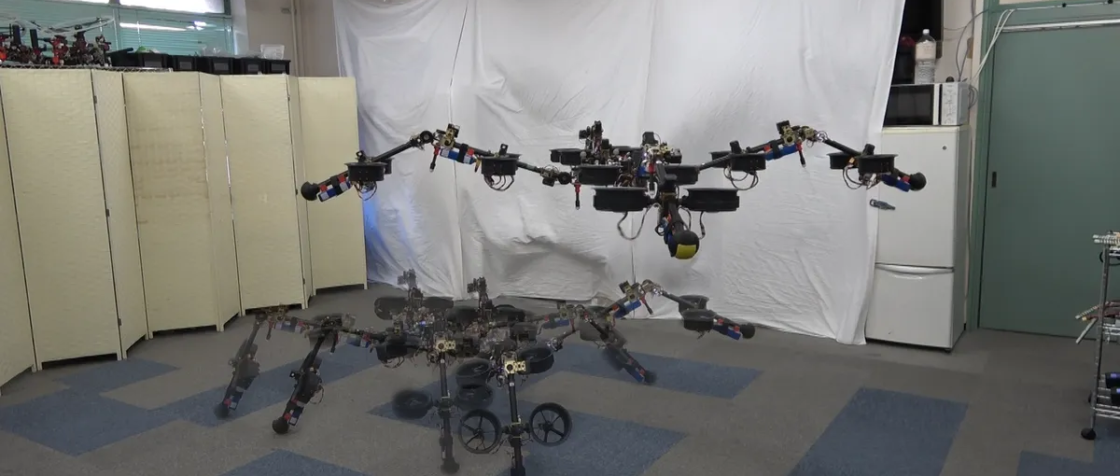
A team at The University of Tokyo recently introduced SPIDAR – a SPherIcally vectorable and Distributed rotors assisted Air-ground amphibious quadruped Robot. SPIDAR is a novel air-ground amphibious quadruped robot that has multimodal locomotion capability to enable it to maneuver in both terrestrial and aerial environments.
In designing SPIDAR, the team was inspired by imagining the flight of mythical dragons.
“When I was a child, I’m from China, so I was always dreaming of dragons,” says project leader and Assistant Professor Moju Zhao. “There are lots of bio-inspired robots, people make robot dogs, robot cats. The dragon is not a real animal, but it’s a kind of holy symbol in Asia. Imagine this robot as a flying human arm, to do manipulation in the air. To change a lamp, or open a door like a human arm. You could also think this robot can transform like a snake; it can explore very narrow spaces.”
Instead of leg actuators, the 15 kilo (~ 33 pound) robot uses lightweight servos on its movable limbs to allow it to stand by itself. This lack of weight means it can fly without a jet engine, but it also means that it does not have enough power to stand by itself – instead, it continually bounces to maintain its upright position.
SPIDAR is made up of eight links and 16 joints and has eight batteries scattered across the links. The robot can walk for more than twice as long as it can fly, for a total flight time of nine minutes. When testing SPIDAR, the team was able to demonstrate the feasibility of it performing a seamless motion that involved static walking and subsequent flight.
For now, SPIDAR still has no specific purpose for the environment, but Zhao and the research team are continuing to develop it to access terrestrial and aerial domains better, and to cover more ground and air in its application.
